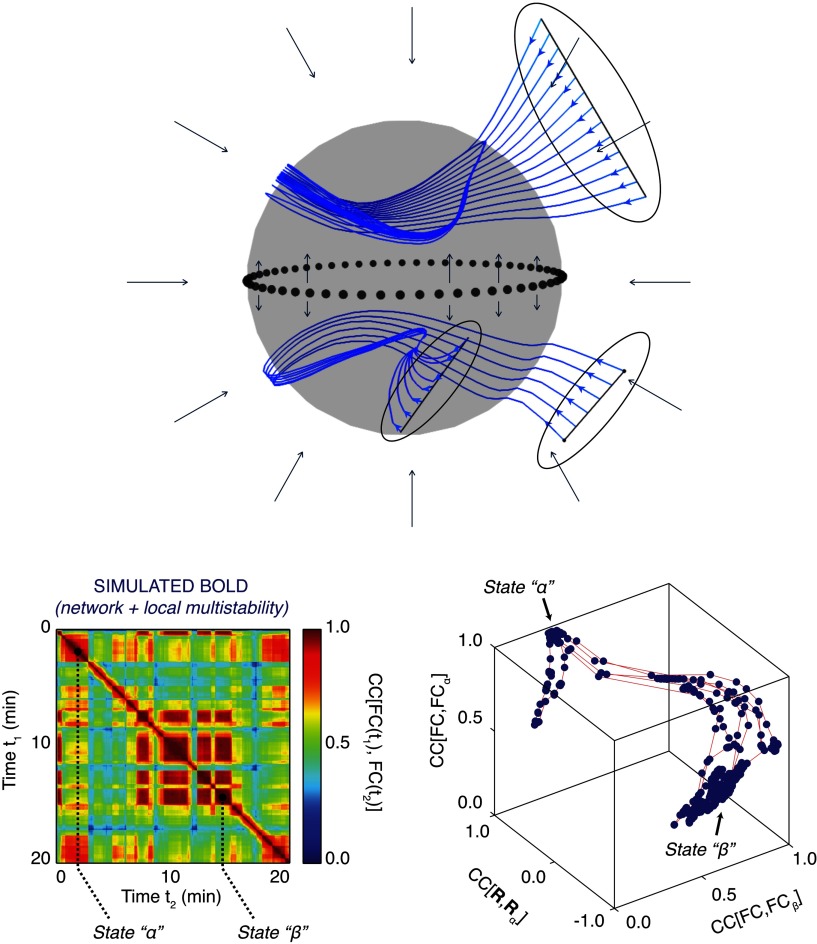Figure 1. .
Structured flows on manifolds (SFMs). Upper figure shows a spherical attractive manifold, displaying various sets of initial conditions (black ovals) of trajectories (blue), evolving rapidly toward the manifold and then continue evolving on the manifold on a slower timescale. The timescale separation is evidenced by the large angle between trajectory and manifold (around 90 degrees). The flow on the manifold is split into two domains, one lower and one upper hemisphere, partitioned by a seperatrix (dotted line). The trajectories trace out lines on the manifold, following the flow (black arrows). The SFMs display a bi-stable organization with closed circular orbits on both hemispheres. The two lower figures show a similar organization, as captured by BOLD signals simulated with TheVirtualBrain (Hansen, Battaglia, Spiegler, Deco, & Jirsa, 2015; Sanz Leon et al., 2013). On the left, functional connectivity dynamics (FCD) are shown over 20 min, in which two large segments of invariant functional connectivity (FC) are identified as states alpha and beta. For both time windows, a principal component analysis was performed spanning state-characteristic subspaces by the leading principal components. When the BOLD signals were projected into the characteristic subspaces, the trajectory of the brain signal is unfolded, identifying the manifolds and trajectories of the corresponding states (figure on bottom right).

